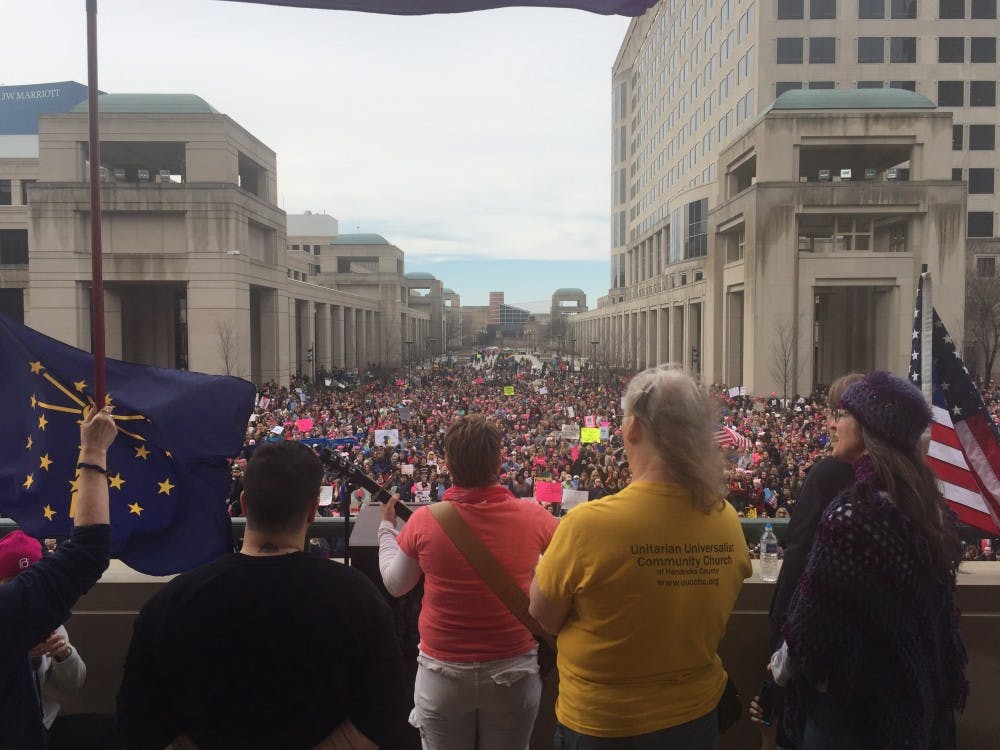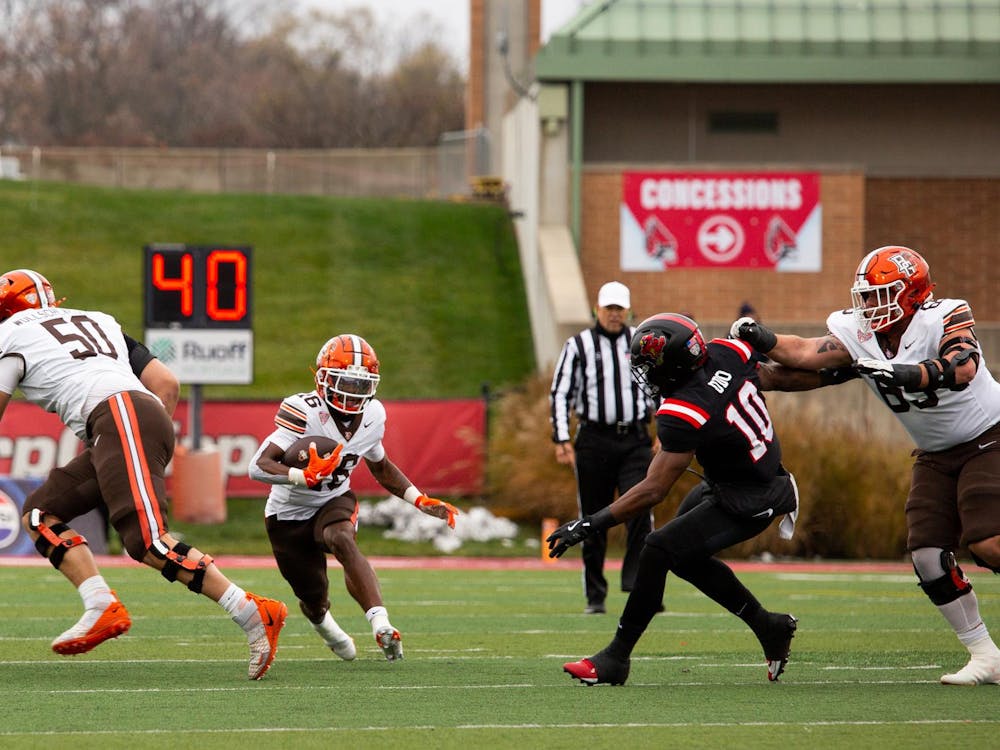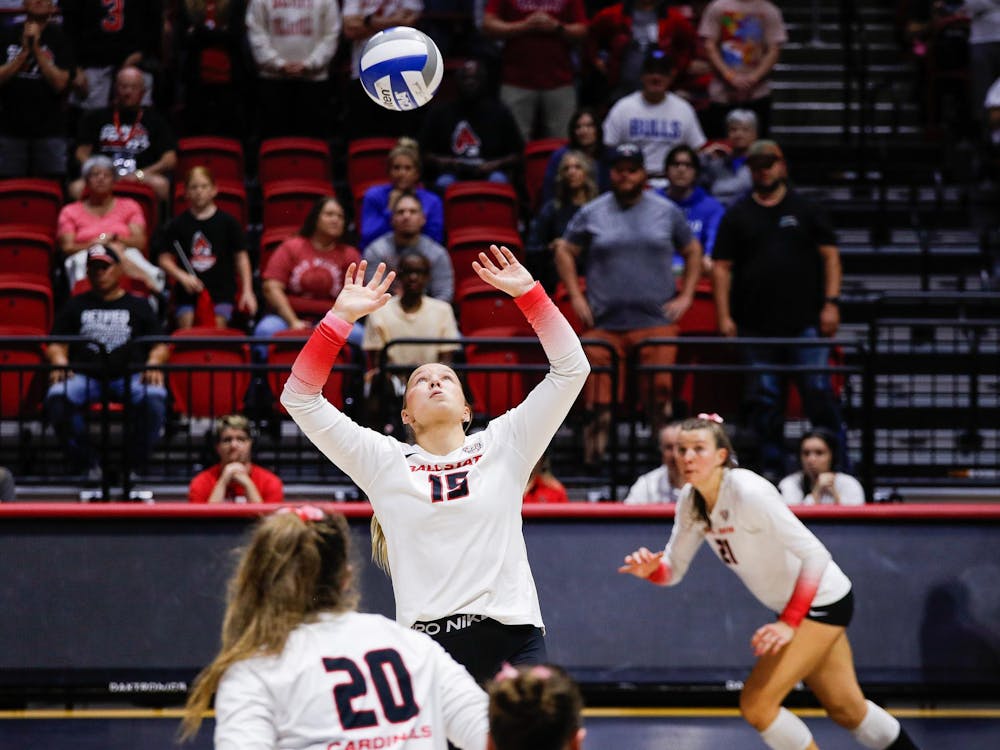With about 7,500 invited on Facebook to attend the Indianapolis march and the combined total of attendance of all marches across the world, the Women’s March has been the largest inaugural protest ever.
Thousands banded together in support of women’s rights outside the Indiana Statehouse Jan. 21.
Indianapolis was a sister location to the Women’s March on Washington, held after President Trump’s inauguration and in opposition to his administration and campaign. About 7,500 people were invited on Facebook to attend the Indianapolis march, and Indiana State Police estimated 4,500 to 5,000 people attended the day’s event.
Instead of an actual march in Indianapolis, a rally was held outdoors. Many supporters held signs — some reading “Smash the Patriarchy” and “No Trump, no KKK, no fascist USA” from the National Organization for Women.
PHOTOS: Indianapolis Women's March
Students and faculty from Ball State also attended the march. Joyce Huff, an associate professor of English, said she attended because she wants to bring hope back to campus from the march.
“I wanted to feel hope again, and it pretty much did that,” Huff said. “For the past eight years, I felt like we had been making progress as a nation towards greater
Huff said she was also pleased by how simple it was for attendees to take action after the march. Different local chapters of social activist groups set up tables and provided sign-up sheets for potential new members. Speech makers also encouraged those in attendance to call their elected government officials.
“One of the things that
Story continues after this video by Patrick Calvert.
A member of Indy 10, a Black Lives Matter branch, attended the march under the alias Rekia Boyd.
“We give the names of those slain by police brutality so we keep the focus on them. It forces people to say their names, especially the names of black women who are oftentimes forgotten in this movement,” Boyd said.
Boyd said it was important to incorporate the Black Lives Matter movement into the Women’s March to stand in solidarity with other minority groups present and for racial representation, which she felt was lacking at the event.
“I wanted to show a face for women of color. I knew that it was going to be
Isaac Spillman, a sophomore telecommunications major, felt the need to stand in solidarity with women as well.
“I came out today because I feel really strongly about the women’s rights movement and all the other movements that are intersectional with women’s rights that are represented here today,” Spillman said. “I have lots of friends who are going to be negatively affected by the incoming administration.”
Jessica Pettengill, a second-year graduate student in the emerging media design and development program, also realized the importance of support and also made her way to Indianapolis for the day.
“To me, the most important part is being an ally for individuals. Being a middle-class white woman, I am very privileged in my life, and my main plan for being here was to show that I’m an ally for those people and to support those that are going to be affected by the policies that could possibly be instated,” Pettengill said. “As far as emotions go, it was very inspiring being here and being around all the people who have spent their lives working to protect women’s rights.”





